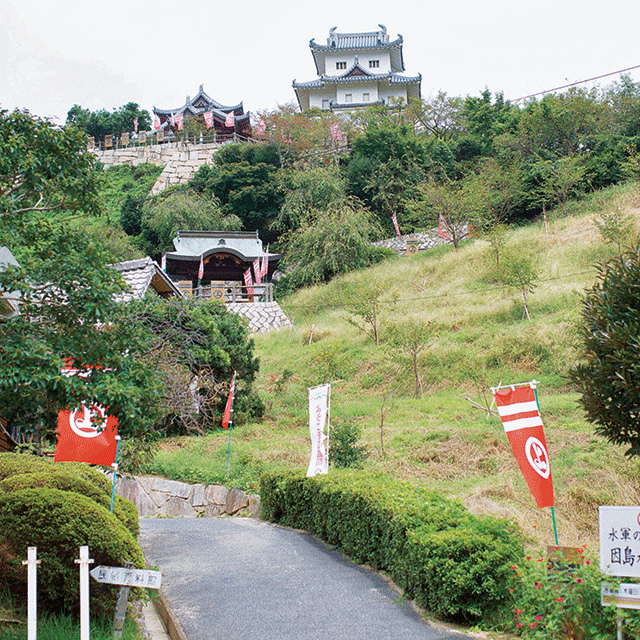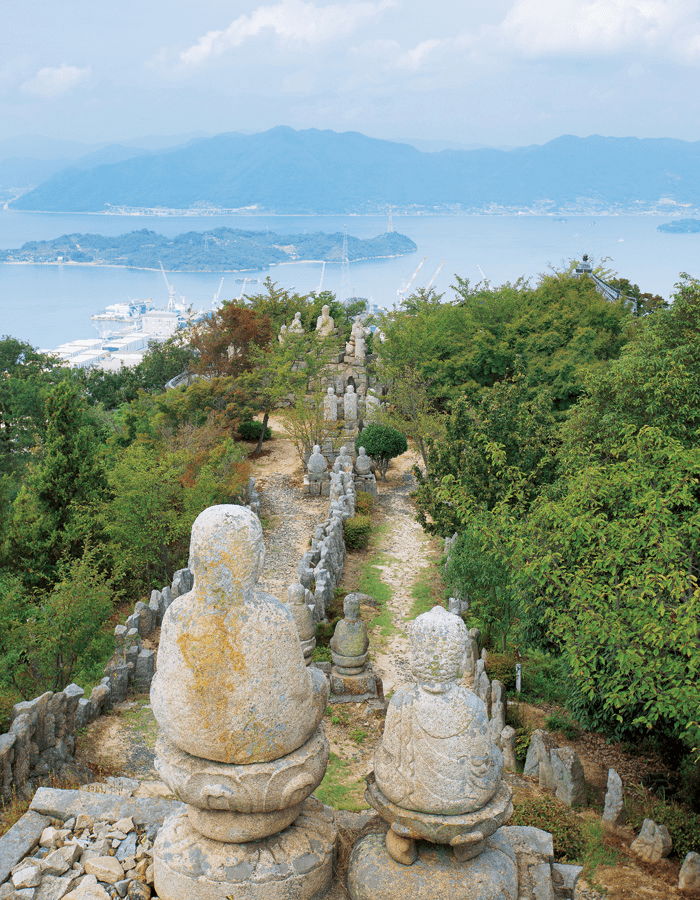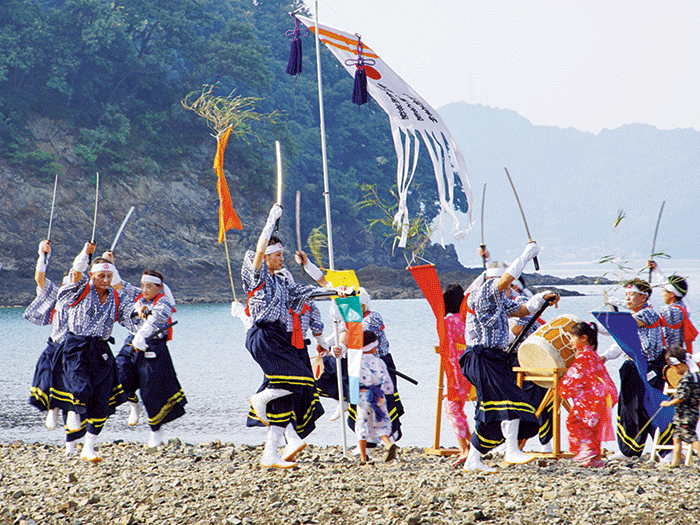

Trace the footsteps of the Murakami pirates: Innoshima Island
Travel to the island of Innoshima to see the large number of castle ruins that still remain.
The Innoshima Murakami branch of the clan based themselves on the island of Innoshima in the Seto Inland Sea. The Innoshima Murakami branch provided Motonari Mori, the ruler of the Chugoku region, with a sea force. A large number of ruins and cultural relics still remain on the island to this day. The Aoki castle ruins, Nagasaki castle ruins, Umagami castle ruins, and others feature historically important remnants such as the lookout spots from which passing boats were monitored, places to hide boats, and holes in coastal rocks where the pirates’ boat moorings were once installed. The Innoshima Suigun Castle is one of only very few museums in Japan built in the style of a castle. The museum exhibits historic materials such as martial artifacts and personal effects, and the corner lookout tower serves both as an observation deck and an exhibit space for boat-related resources. At the foot of the mountain below the museum, you will find Konrenji Temple. The closely crammed stone stupas on the temple grounds are said to be the graves of members of the Murakami clan and other retainers. The stupas speak to visitors of the splendor of those bygone days. It is not only ruins that have survived. A dance called “Horaku-odori” that was performed when crews departed for battle, and again upon their return, has been passed down to modern times, and locals also hold an Innoshima Suigun festival. The free-spirited and courageous spirit of the Murakami clan have been inherited by today’s Innoshima residents. The temple dedicated to Kannon is said to have been established by 6th generation clan member Yoshimitsu Murakami. Mt.Shirataki, at the foot of which Konrenji is located, has roughly 700 stone Buddha statues lined up from the main temple gate up to the summit. From the observation deck on the summit visitors can gaze out and appreciate the beauty of the islands of the Seto Inland Sea. (This information is as of November 2017)


MAP
SHIRATAKIYAMA
- Address
- Shigei-cho,Innoshima,Onomichi-city,Hiroshima [Map]
- TEL
- +81-845-26-6212(Onomichi-city Innoshima General Branch Office Shimaokoshi Department)
- Access
- From the Nishiseto Expressway (Shimanami Kaido) Innoshima-kita IC, drive 15 minutes to the Shiratakiyama 8th base parking lot, and walk 10 minutes to the summit of the mountain, or drive 10 minutes from the Innoshima-kita IC to the parking lot at the start of the trail up the mountain, and walk 30 minutes to the summit
MAP
